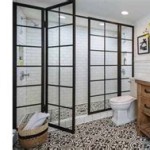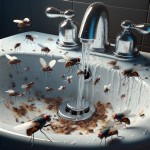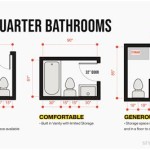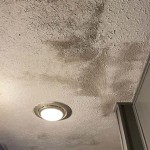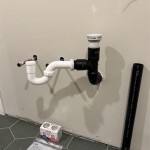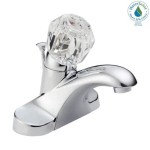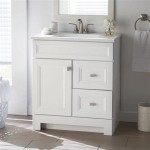How to Take Off a Bathroom Light Bar
Removing a bathroom light bar is a common home improvement task, often necessary for replacing a fixture, painting the wall, or performing electrical work. While it might seem straightforward, proper procedure ensures safety and prevents damage to the fixture, the wall, or the electrical wiring. This article provides a comprehensive guide to safely and effectively remove a bathroom light bar.
Before commencing any electrical work, safety is paramount. Electricity poses a significant risk, and complacency can lead to serious injury. The following steps outline the essential safety precautions that must be taken before starting the removal process.
The first and most crucial step is to disconnect the power supply to the light fixture at the circuit breaker. Locate the breaker that controls the bathroom lights, usually labeled "Bathroom Lights" or "Lighting Circuit," within the electrical panel. Flip the breaker to the "off" position. To confirm that the power is indeed off, test the light fixture by attempting to turn it on. If the light does not illuminate, proceed with caution. However, for added assurance, use a non-contact voltage tester. Hold the tester near the light fixture's wiring to confirm that no voltage is detected. A non-contact voltage tester provides an extra layer of safety and is a worthwhile investment for any homeowner undertaking electrical projects.
Gathering the necessary tools before starting the removal process streamlines the work and minimizes potential complications. Having the right tools at hand ensures that the job can be completed efficiently and safely. The required tools include a screwdriver set (both flathead and Phillips head), a non-contact voltage tester, a wire stripper/cutter, electrical tape, wire connectors (wire nuts), safety glasses, and work gloves. A small container or bag is also useful for storing screws and small parts to prevent them from getting lost. A step stool or ladder might be necessary if the light fixture is located high on the wall. Having these tools readily available will facilitate the removal process and contribute to a safer and more organized working environment.
Understanding the Light Bar’s Construction
Bathroom light bars come in various designs and configurations, but their basic construction typically involves a mounting bracket attached to the wall and a fixture housing that holds the light bulbs and covers. The fixture housing is usually secured to the mounting bracket with screws or other fasteners. The electrical wiring connects the fixture to the house's electrical system. Understanding how the specific light bar is constructed is crucial for a successful removal. Inspect the fixture closely to identify the locations of screws, fasteners, and wiring connections. Taking note of the order in which the components are assembled will also aid in reinstallation if the fixture is to be reattached later. Familiarizing oneself with the light bar's construction reduces the risk of damaging the fixture or the wall during removal.
Before physically removing the light bar, it's beneficial to document the existing wiring configuration. This step is especially important if the homeowner is unfamiliar with electrical wiring. Use a smartphone or camera to take several clear photos of the wiring connections before disconnecting any wires. The photos should show the colors of the wires and how they are connected to the terminals. This visual documentation serves as a reliable reference during reinstallation, ensuring that the wires are reconnected correctly. Alternatively, a diagram can be sketched, noting the wire colors and their corresponding connections. Accurate documentation prevents wiring errors, which can lead to short circuits or other electrical problems.
Removing the Light Bar: A Step-by-Step Guide
With the power off, the tools gathered, and the light bar's construction understood, the physical removal process can begin. The following steps provide a detailed guide to removing the light bar safely and efficiently.
The first step is to remove the light bulbs and globes or shades. Carefully unscrew the light bulbs and set them aside in a safe place. Remove any globes or shades by unscrewing or unclipping them, depending on the fixture's design. Some globes might be held in place by small screws or clips that need to be released. Handle the globes and shades with care, as they are often fragile.
Next, locate the screws or fasteners that secure the fixture housing to the mounting bracket. These screws are typically located on the front or sides of the fixture. Use the appropriate screwdriver (flathead or Phillips head) to loosen and remove the screws. As the screws are removed, support the fixture to prevent it from falling. Once all the screws are removed, carefully detach the fixture housing from the mounting bracket. If the fixture is stuck, gently wiggle it to loosen it. Avoid forcing the fixture, as this could damage the wiring or the wall.
With the fixture housing detached from the mounting bracket, the electrical wiring will be exposed. Before disconnecting any wires, double-check that the power is still off using a non-contact voltage tester. If no voltage is detected, proceed to disconnect the wires. Typically, there will be three wires: a black (hot) wire, a white (neutral) wire, and a green or bare copper (ground) wire. Use wire strippers to carefully disconnect the wires from the fixture's wiring. If the wires are connected with wire nuts, unscrew the wire nuts to release the wires. As each wire is disconnected, immediately cap the bare ends of the wires with electrical tape or wire connectors (wire nuts). This prevents accidental contact with the wires and reduces the risk of electric shock. After all the wires are disconnected and capped, carefully lower the fixture housing to the ground.
The final step is to remove the mounting bracket from the wall. The mounting bracket is usually attached to the junction box with screws. Use a screwdriver to loosen and remove the screws. Once the screws are removed, the mounting bracket should detach from the junction box. Inspect the junction box for any damage or exposed wires. If there are any exposed wires, cap them with electrical tape or wire connectors. Cover the junction box with a blank cover plate for safety and to prevent dust or debris from entering the electrical system. Secure the cover plate with screws.
Addressing Potential Problems
While the removal process is generally straightforward, certain issues might arise. Addressing these problems effectively ensures a safe and successful outcome.
One common problem is encountering rusted or stripped screws. If a screw is rusted or stripped, it can be difficult to remove with a regular screwdriver. In such cases, try using a screw extractor or a rubber band to improve the grip. Place a wide rubber band between the screwdriver and the screw head, then apply pressure while turning. The rubber band can fill the gap in the stripped screw head and provide more friction. If this doesn't work, a screw extractor can be used. A screw extractor is a specialized tool that grips the damaged screw and allows it to be turned out. Alternatively, penetrating oil can be applied to the screw to loosen the rust. Let the oil soak in for several minutes before attempting to remove the screw.
Another potential problem is dealing with damaged wiring. If the wiring is frayed, cracked, or otherwise damaged, it should be repaired or replaced by a qualified electrician. Do not attempt to repair damaged wiring unless properly trained and equipped. Damaged wiring poses a significant electrical hazard and can lead to short circuits or fires. If unsure, it is always best to consult a professional electrician.
Sometimes, the light fixture might be sealed to the wall with paint or caulk. This can make it difficult to remove the fixture without damaging the wall. To break the seal, carefully score around the edges of the fixture with a utility knife. This will separate the paint or caulk from the fixture and make it easier to remove. Be careful not to cut into the wall or the wiring. After scoring the edges, gently pry the fixture away from the wall. If the fixture is still stuck, repeat the scoring process and apply gentle pressure until it comes loose. Avoid using excessive force, as this could damage the wall or the fixture.
After removing the light bar, it's important to dispose of it properly. Contact local recycling centers or waste management services to inquire about proper disposal methods for electrical fixtures. Light bulbs, especially fluorescent bulbs, may contain hazardous materials and should be disposed of according to local regulations. Some retailers offer recycling programs for light bulbs and other electronic waste. Proper disposal protects the environment and ensures compliance with local laws.

How To Remove Ugly Bathroom Lighting Decor Adore

Bathroom Vanity Wall Mounted Light Removal New Install Unboxing Plus Review El 3106046ch 32537

How To Remove Old Vanity Light Fixture

How To Replace A Bathroom Light Fixture

Bathroom Lighting How To Replace A Vanity Light The Home Depot

How To Install A Vanity Light And Electrical Box Chic Misfits

How To Replace A Hollywood Light With 2 Vanity Lights

How Do I Replace The Bulb In This Enclosed Bathroom Ceiling Light Hometalk

Replacing A Light Fixture On Vanity Mirror

Can T Remove Bathroom Light Fixture Doityourself Com Community Forums
Related Posts
